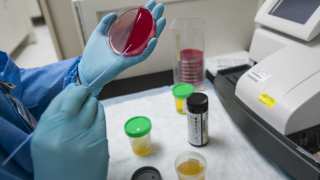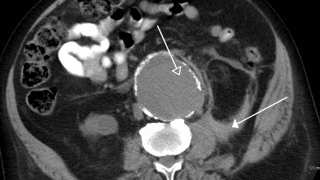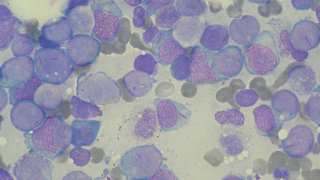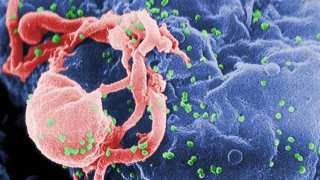Bioengineering
Genome Study Reveals Why The American Cockroach Is Virtually Indestructible
Periplaneta americana, commonly known as the American cockroach, is the most dreaded house pest of them all. Why? It is almost impossible to kill. This unique survival mechanism has inspired scientists to create robots mimicking these roaches. But, what makes them so adaptable to the environment that they cannot be destroyed easily? Their genes!
True Biological Age Can Be Revealed By…Urine Test
Even though the process of ageing differs among individuals (based on their lifestyles and environment), it is inevitable and irreversible for all of them. Chronological age can be measured according to birth date, each year, but experts have adjudged this method to be inaccurate while determining true biological age.
Refining the Role of Medical Imaging: Nanotechnology Converts Normally Diagnostic Procedure into Potential Treatment
Many forms of cancer have been treated using systemic radiotherapeutics, which can destroy cancer cells, their ability to replicate or both. However, these drugs may also attack other, healthy tissues on their way to the target tumour, which results in severe side-effects for the patient and explains why radiotherapy can have such a profound negative effect on the body during a course of this treatment. Therefore, medical scientists and researchers have been working for some time to develop these therapies so that they attack cancer cells with much more accuracy and specificity.
iOncology: AI Merges Clinical Expertise and Big Data to Beat AML
Cancer drugs are becoming impressively diverse in terms of their numbers and biological functions. This level of pharmaceutical development has arisen in response to the many types and subtypes of cancer that we are aware of.
Tuning Out Tinnitus: New Study Indicates Possible New Therapy for This Condition
Tinnitus is a condition in which the patient is subject to a consistent level of ‘phantom’ ringing or buzzing in the ears. It is not clear what causes it, although environmental and occupational factors have been implicated in the development of the condition.
Much Ado About Aging: Specific Enzyme May be Associated With ‘Biological Clock’
You may have heard phrases such as ‘real’ or ‘biological’ age, and how it may actually differ from your actual ‘chronological’ age.
New Removable Implants for Type 1 Diabetes?
Type 1 diabetes is an autoimmune condition in which the patient’s ability to produce insulin is negated by their body’s own protective processes, often from an early age. As with type 2 diabetes, it can require chronic medical treatment from the point of diagnosis in order to avoid severe, even life-threatening, disease events.
Research Shows That The Ebola Virus Can Be Inhibited
The first cases of Ebola virus disease (EVD) were registered in Africa’s Sudan and Congo, and since then it has spread by contamination and human-to-human transmission to several parts of West Africa and surrounding regions. Hailing from the Filoviridae family, the disease is incurable and, most often, fatal.
Scientists Develop Hairy Skin In Vitro For Treatment of Skin Conditions
According to the Global Burden of Skin Disease, skin conditions were ranked fourth in leading causes of disability, globally, and was the 18th leading cause of DALYs (disability-adjusted life year). Another serious condition sweeping nations is melanoma, a type of skin cancer affecting more than 85,000 individuals per year in the US alone.
A New Treatment For Diabetes? Cell Encapsulation Shows Promise
The management of type 1 diabetes mellitus is an extensive, cumbersome process for patients as it involves rigid schedules and maintenance with regard to administering insulin injections regularly. As of 2017, according to the National Diabetes Statistics Report, more than 30 million people around the world are suffering with diabetes, a tenth of that affecting the American population.
Dolly’s Successors? Chinese Researchers Have Cloned Monkeys
Remember Dolly the sheep, the first mammal born as a product of cloning? That was in 1996. A few years after that the rhesus macaque, Tetra, was created by a simpler technique called ‘embryo splitting’. Over the last decade, the exponential growth of technology in areas of bioengineering and medicine has led researchers to revisit the idea of developing cloned mammals for the purpose of research and therapy.
New Drug May Be Ultimate Pharmaceutical Grail for People with Obesity
Obesity is a serious public health problem that is taking hold of the vast majority of countries in the developed world. For example, approximately 4 of every 10 adults in America is obese. Obesity may have a considerable negative impact on quality of life, as it can impede normal independent movement and exercise. It may also lead to chronic health problems such as cardiovascular disease, type 2 diabetes and non-alcoholic liver failure.
Epigenetics Study Could Help Keep Egg Cells In Stasis
Owing to the persistence of issues such as infertility and failure to conceive, aspects of female fertility have been studied in the past, and are still being researched extensively. Recently, scientists at the Babraham Institute in Cambridge, UK, along with other German experts, discovered that epigenetics and a protein called MLL2, can attempt to solve the issue of fertility by helping in maintaining the fertilizable egg cells’ freshness and stasis.
New Hope for Old Melanoma Treatment: Study Indicates Potential for Anti-PD-1 in Novel Combination
Melanoma is the most severe form of skin cancer. It can even be fatal, although timely detection and treatment can effectively protect against this eventuality. This treatment may come in the form of surgical incision, or as medical anti-tumour therapy. Medical treatment for melanoma has resulted in full remission for some patients. However, adaptations in these tumours have led to relapses for others. This is true for a recently-developed treatment called anti-PD-1 therapy.
Syrian Boy with Genetic Disorder Gets Skin Replacement Which Saves His Life
Although affecting less than one million people in the United States, junctional epidermolysis bullosa (JEB) is a lethal genetic condition that causes severe blistering and erosions on the skin by means of injury or from friction by scratching. Those who survive endure chronic wounds that can often lead to skin cancer, and sometimes even death.
Manganese Orbs For Tumor Imaging and Treatment
Today, there are many projects that investigate new and emerging treatments that address a critical factor in cancer progression: the tumor microenvironment. This is a complex process, in which cancer cells adjust the conditions within, and also possibly in the immediate vicinity of, the tumor they have formed to their own ‘liking’. Tumors develop their own internal environments for a number of reasons, which include resistance to aspects of the patient’s immune system which could be capable of destroying or damaging them otherwise.
Synthetic Polymers Revolution: The Strength Of The Hydrogel Fibers
Many material scientists and engineers work with the goal of making synthetic polymers with the strength and conformation to rival or exceed natural products such as silk. This is done to create textiles, sheets or other implements to be used in construction or outerwear for their durability, strength and longevity. Unfortunately, though, there are often drawbacks linked to the compounds these researchers develop. They may be made from toxic substances, be expensive to manufacture, or require a large amount of energy in their formation.
Drugging the Undruggable: Novartis’ New Academic Partnership Seeks to Drag Diseases into the Cellular Recycle Bin
Many drugs available today act by targeting one pathological protein associated with an illness. This protein might be a toxin from bacteria or virus particles, or a dysfunctional human protein that cancer cells use to avoid the natural process of cell death. Pharmaceutical manufacturers and researchers can achieve this because they have been able to study the protein in question in enough depth to find locations within their molecular structure that are highly relevant to disease risk or progression.
Pre-Life Biochemistry: New Study May Have Discovered the Origin of Protein Synthesis
Many scientists hypothesise that the creation of life as we know it required a pivotal stage in which primal, simple biological building blocks (such as amino acids) were bonded together, most likely as a result of phosphorylation (a reaction in which two molecules are conjoined with the input of one phosphorus atom and the loss of one atom from the molecules’ existing structure). Phosphorylation underpins a huge range of important biochemical reactions (e.g.
These Super-Antibodies Can Attack Almost All HIV Strains
The AIDS virus, HIV, continues to threaten communities globally, affecting more than 35 million people each year. Although there have been attempts to develop vaccines for this life-threatening syndrome, it is the virus’ genetic diversity that has posed challenges in the past. Researchers at pharmaceutical company, Sanofi, and the US National Institutes of Health have collaborated to engineer specific broadly neutralizing antibodies with the capacity to fight 99 percent of HIV strains, and potentially prevent infection too.






















